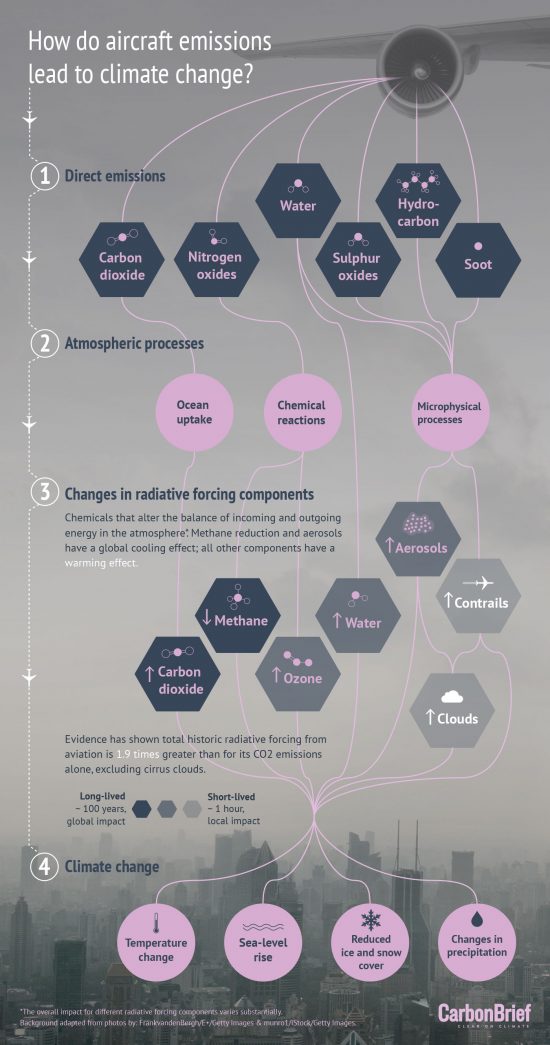March 18, 2017 – Last October I posted information here about an agreement by 191 country members of the International Civil Aviation Organization (ICAO) to adopt a carbon emission reduction strategy that combined real reductions with purchases of offsets beginning in 2021. The agreement contained several missing pieces:
- It allowed air carriers to continue to increase CO2 emissions up until 2021.
- It made no provisions for addressing water vapour emissions.
- It made no provisions for addressing aerosols.
- It made no provisions for addressing nitrous oxide (NO2).
- It made no provisions for addressing sulphur oxides (SO2).
- It made no provision for addressing hydrocarbons emissions.
- It made no provisions for addressing airborne soot.
In 2015 the industry generated 781 megatons of CO2, more than the total emissions of the state of Germany. The total equaled 2% of global CO2 emissions from anthropogenic sources.
Why would the agreement only target CO2?
Largely because the industry and science have yet to agree upon a hard-and-fast number for aerosol and soot, unburned hydrocarbons, NO2, SO2, and water vapour impacts from aircraft and the contribution to global warming. For example, there appears to be a strong correlation between contrails formed behind aircraft flying at high altitudes and the formation of cirrus clouds in the upper troposphere. The research on the heat-trapping impact of these aircraft-induced cloud formations, however, has yet to be fully understood.

Scientists suspect, however, that these additional emissions could increase the industry’s impact up to four times more than its current CO2 contribution to global warming. For example, there appears to be a strong correlation between contrails formed behind aircraft flying at high altitudes and the formation of heat-trapping cirrus clouds in the upper troposphere. The contrails, although transient in nature (one of the reasons science struggles to measure their impact) contain aerosols, soot, unburned hydrocarbons, SO2, NO2 and water vapour. And contrail formation varies by location. For example, winter and overnight flights produce more of them, and altitude contributes as well. High flying aircraft generate more contrails than those flying at lower elevations. In a study published in 2014, it recommended that cruising altitudes 610 meters (2,000 feet) lower could reduce NO2 emissions by 40%. A paper released last month suggests restricted aircraft routes and flight trajectories, in other words, no fly zones, could further reduce harmful emissions.
The infographic appearing below describes what scientists suspect is happening and how aircraft contribute to climate change.

Of course, the most significant contribution the industry can make is through technological innovation, creating new aircraft and engines that contribute fewer greenhouse gas and aerosol emissions while removing older airplanes that are high emitters. A paper published this week in Nature Letters presents findings from sampling exhaust plumes of jet aircraft and shows that adding biofuels to conventional jet fuel in a 50/50 mix can reduce aerosols by 50 to 70%.
NASA is studying hybrid battery-powered electric and gas combined engines with lighter airframe structures and new aerodynamic shapes to reduce emissions. It is also studying a design concept it calls distributed propulsion, taking the engines from beneath the wings and putting them up front on the wing edge, increasing the number of engines while reducing their size, narrowing the wing and running single motors on wingtips at cruising altitudes. All these changes will contribute to better lift at low speeds, greater fuel efficiency, and a significant drop in greenhouse gas emissions.
Much of the research into reduced greenhouse gas emissions and aviation innovation related to reducing greenhouse gas emissions may grind to a halt under the current United States administration. One can only hope that is not the case.







